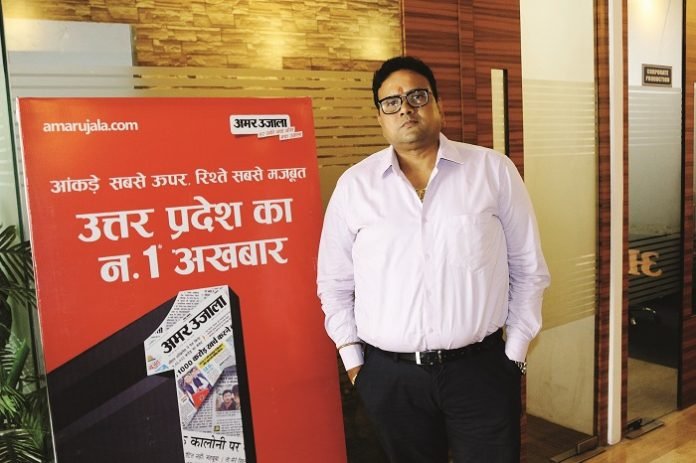As per the latest findings of Audit Bureau of Circulations (ABC) from July to December 2015 over July to December 2014, Amar Ujala has recorded a circulation of 29.35 lakh copies, a growth of 29%. This includes the newly introduced price variant of Amar Ujala in broadsheet. This was done to attract and grow the readership base of relevant markets. Amar Ujala has left Dainik Jagran behind by 85,878 copies in UP and 72,266 copies in Uttarakhand. Amar Ujala, as certified by ABC, leads in eight editions of UP, Dehradun and Haldwani.
Overall, Pradeep Unny, the AVP – production (newspaper and commercial) of Amar Ujala says that the approaching state assembly elections in UP have already had a significant effect and will further help in increasing the growth in the market. However, the market conditions in the metro cities are not showing growth, it seems, says Unny. “Growth has been pretty much stagnant in the metro cities at the moment but there is considerable growth in tier-2 and tier-3 cities. Circulation wise we have grown by at least 2.5 to 3 lakh copies and there is a 14% increase via ad sales as well. So, growth in smaller cities is very much there and the market is doing well at the moment.”
To cope up with the added circulation and also to upgrade its existing machinery, Amar Ujala is installing new presses in various locations in UP. Two Hiline six 4-Hi towers from Manugraph are already installed in Noida and in Lucknow and another six 4-Hi towers have been ordered for Meerut. Two Manugraph M360 presses – one in Varanasi and one in Agra will be shortly installed. New towers from TPH are also being added on to locations in Meerut, Agra, Varanasi and Kanpur. All 24 pages in color is the goal at the moment for Amar Ujala.
Amar Ujala is also migrating from thermal to violet Agfa CtPs at Agra, Lucknow, Kanpur and Varanasi. One of the reasons for moving from TPH presses, to Manugraph is the better technology and operability offered on Manugraph presses as pointed out by Unny. He says, “Presently, we need faster speeds with better registration and on these counts Manugraph is an appropriate choice for us.”
Unny says that during the last few years a lot has been discussed on the possibility of online advertisements cannibalizing newsprint ads but it has not happened yet in the mainstream at least.
“Amar Ujala has invested a considerable amount of resources in its online services and now we have a separate division in a separate facility in Noida completely devoted to online publishing and social media. And, there has been considerable growth in the hits that we have received or in page opens as well as in overall volume. However, I believe it is still a long time before online platforms will be in a position to compete with the newsprint editions in terms of either circulation or advertisements in India. There is so much power outage in some parts of the country that people can hardly charge their phones. How do you expect them to be tech-savvy?”
Other innovations carried out by the media house involves the increased usage of gluing. Unny says, “Gluing is not a new technique any more and is being widely used by leading newspapers all over the country. This is a visible trend and we are also showcasing this technique on our daily. UV curing, on the other hand, is not that much popular and even if it is adopted, it will take a considerable amount of time before it is useful for us in the mainstream.”
Contract printing is also a visible trend catching up with the industry. Although Amar Ujala is not printing for anybody else at the moment, there is considerable interest in the market. Unny says, “We are talking to a few big newspaper houses who are interested to print with us. This is another visible trend as more and more newspapers are looking at exploring and penetrating the deeper regions of the country. Overall, I believe, the Indian newspaper industry is in a robust state and all are doing well. My opinion is that newspapers in India will continue to grow and newspapers are going to stay,” concludes Unny.

















